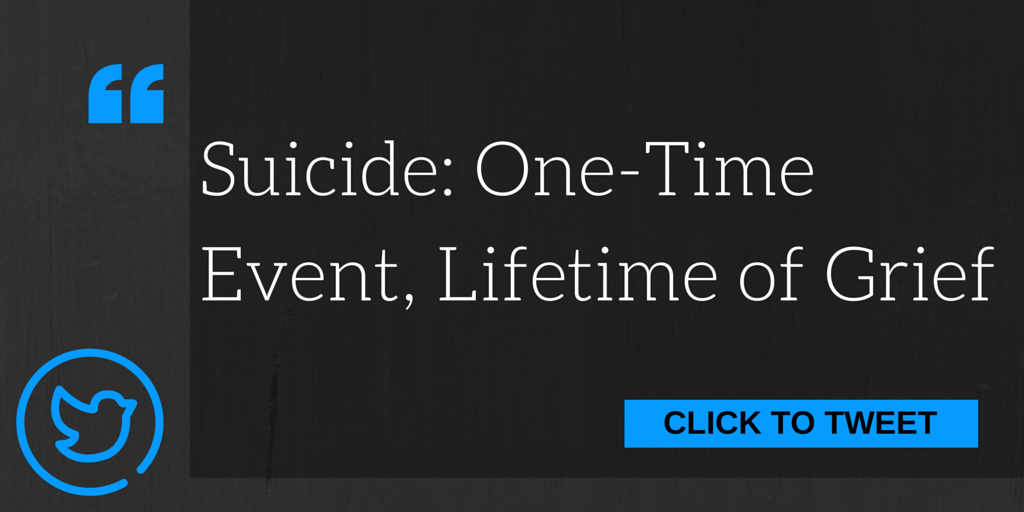I was fourteen when my Aunt Missy killed herself. It was the last day of June in Alabama when a police car pulled up to our new house, which was still under construction. I remember how hot those 2×4’s were, as they baked in the sun. Per the officer’s instructions, we loaded up in the minivan and drove down the hill to the fire station where my dad worked, so Mom could call her parents. Very few people had cell phones yet, and my Momma wasn’t one of them. I’ll never forget the way she screamed, “My sister!” as she dropped the grey receiver and it swung out and slammed back against the concrete wall, there in the lobby of Fire Station #1.
She’d been missing three days. And this wasn’t her first attempt. She’d had many episodes in recent years and as hard as my grandmother tried to help, there was nothing else anyone could do. Even with all the training I’ve taken and books I’ve read, I don’t think you can stop someone who is bound and determined to end their suffering. And even though we all carried the eerie expectancy of that dreaded phone call, my mom’s sister was dead, and my cousins had just lost their mother.
I was a pallbearer at the funeral. It was my first time to be a pallbearer, and carrying my aunt in her final resting place was an unusual burden to bear as a preteen. I remember letting go of the metal handles as we set her mauve casket down, my lip quivering as I turned around. I walked right into my Dad’s chest and sobbed as my head landed there.

Aunt Missy was my favorite aunt: tall, thin, blonde. Beautiful. She looked like she’d just walked off the set of The Dukes of Hazzard, and she had the most infectious laugh. I loved to stay at her house during the summer with my cousins, her daughters. We would play in their above ground pool until all day long and by the end of summer, we’d be as dark as a glass of iced tea. They lived just up the hill from my Grandparents’ house and we would walk along the dirt roads between the two houses, often.
In the immediate aftermath of her suicide, the days crawled by. I remember being visited by the associate pastor from our church and the question at the forefront of everyone’s mind was, where is Missy spending eternity? We’d heard mixed signals about what happens to someone who willfully kills herself. The days are blurred together in my memory, but the loss left a hole in my heart that only Aunt Missy could fill.
Eventually, life went on. Her birthday is still marked on the calendar at my mom’s house, and so is the day she died, year after year. Just last week, we shared tears and laughter, thinking back on the past nineteen years without her. But she’s not a topic of daily conversation any more. Mom goes over and visits her grave on rare occasion. She never talks about it. She says she thinks of her sister when she sees a butterfly, but how often do you actually see a butterfly?
Aunt Missy was the only person I knew with mental illness, though no one ever called it that. I had never attended a funeral of a suicide victim before hers. For a fourteen-year-old, only very old people, like Papaw Thompson, died, unless they were sick with some rare illness. I never knew a brain could be ill.
As a teenager, I expected grief to be over in about six months. A year, max. Nobody tells you that grief can last a lifetime.
Join the Grace is Messy Tribe
Sign up to get access to the member’s library, stocked with resources and printables for you.













